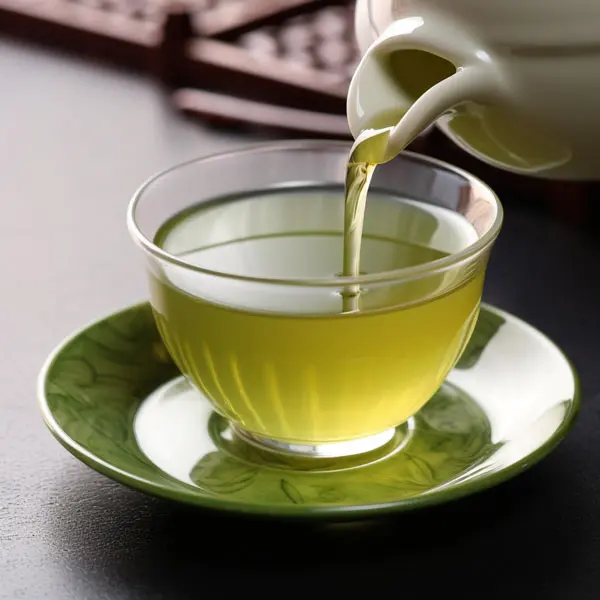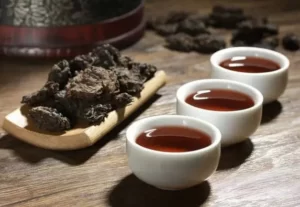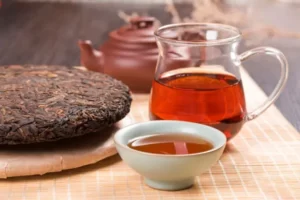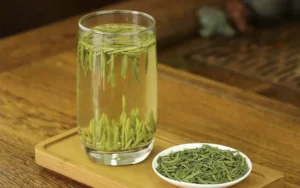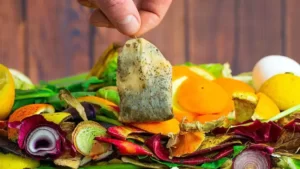Introduction
If you’ve ever experienced the art of Gongfu tea, you might have noticed the charming ceramic figurines placed on the tea tray – these are TEA PETS. Tea pets are one of the most representative elements of Gongfu tea, carrying auspicious meanings and providing joy through their “nurturing” process. For those new to the world of tea, tea pets may seem unfamiliar, this article will provide you a comprehensive understanding of tea pets, and we believe you’ll fall in love with them. Let’s dive in.
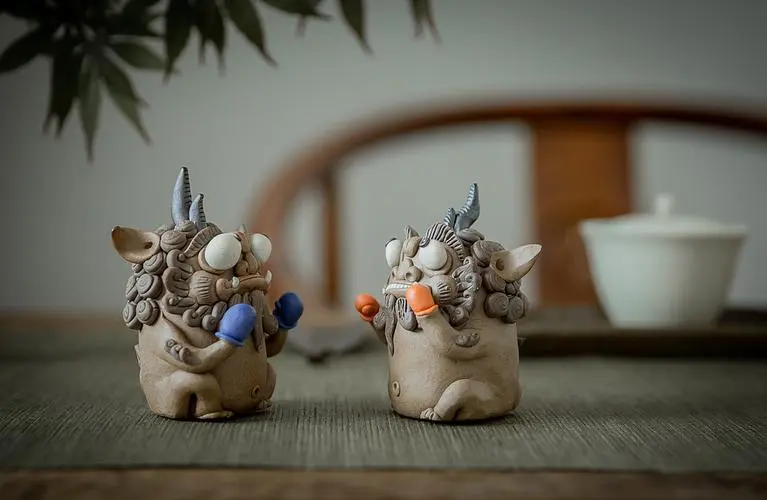
What are Tea Pets(ChaChong)?
Tea pets are adorable companions that join you in your tea-drinking sessions. Don’t be misled by the name – they are not living creatures but small clay or ceramic figurines, typically about the size of a Gongfu tea cup. Tea pets often grace the Gongfu tea tray, where they bask in the nourishing tea waters. As time goes by, the tea pets that absorb the tea will become darken and oily in color.
In Chinese tea culture, it is believed that tea pets possess a certain spirituality, and with devoted care and nurturing, their life force can be felt. Artisans make tea pets based on the Chinese zodiac and mythical animals in the hope that they will bring wealth, health, longevity and happiness to their owners.
The Origin of Tea Pets
Tea pets originated in China and spread to Japan and Korea with the spread of Kung Fu tea culture. Legend has it that during the Song Dynasty in 13th century China, there was a master craftsman of Zisha teapots named Chen Zhongmei who lived in Yixing. He excelled at carving various patterns on teapots and would often practice on clay blocks, which he then left on the tea table. These intriguing creations caught the attention of his tea-drinking friends, and thus, “Tea Pets” became popular.
What are Tea Pets Made of?
With the addition of multiple cultures, tea pets have derived a variety of shapes, materials and functions. Most tea pets were originally made from unglazed Zisha clay or pottery, and even today, their production is concentrated in the Yixing region. Clever tea lovers mix one or more types of zisha clay together to form red, yellow, brown, and black tea pets for the tea table. These tea pets made of natural zisha clay are non-toxic and will not evaporate harmful substances when exposed to hot water.
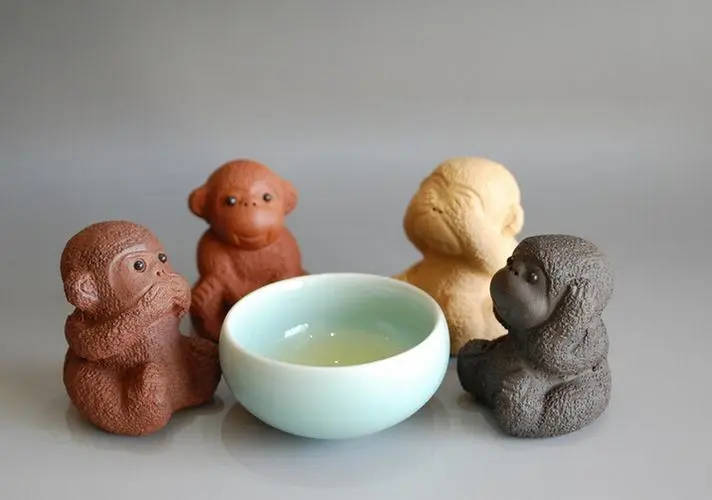
However, there are many people who prefer resin and ceramic, and those color-changing tea pets are often made of resin. As for other materials, like stone, bamboo, jade, and metal, you can put them on your tea table if you like.
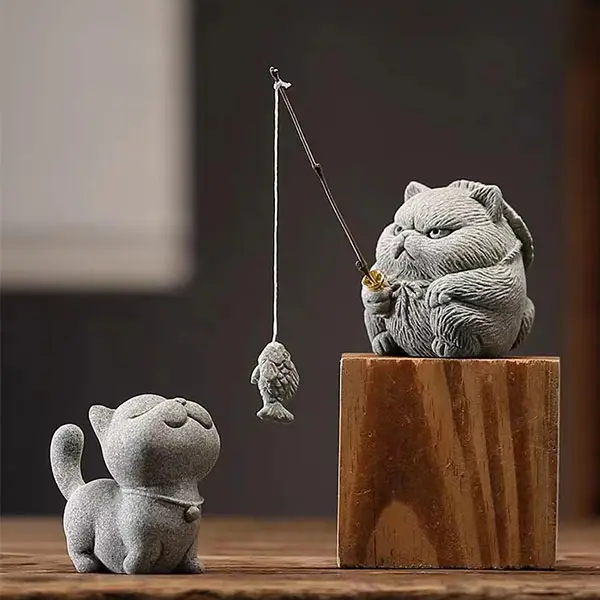
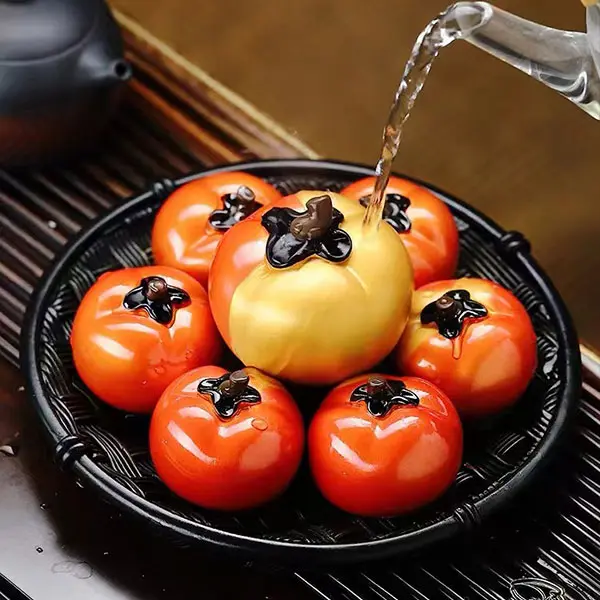
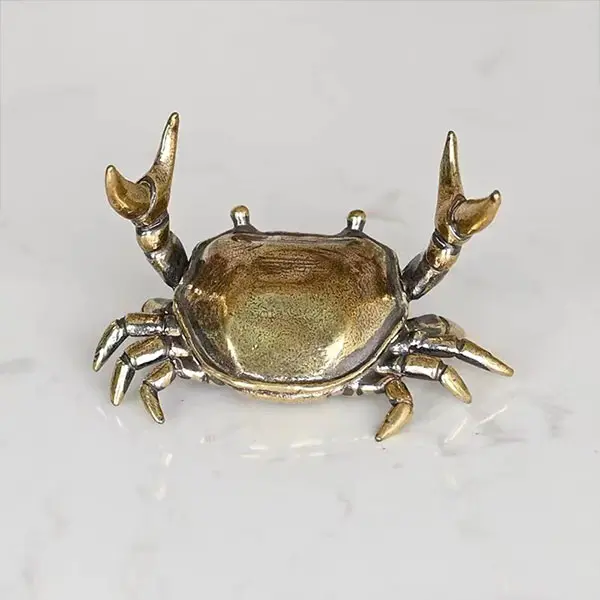
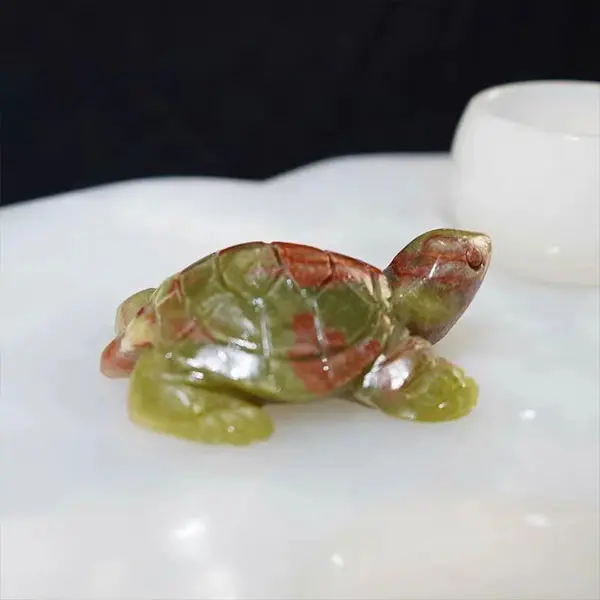

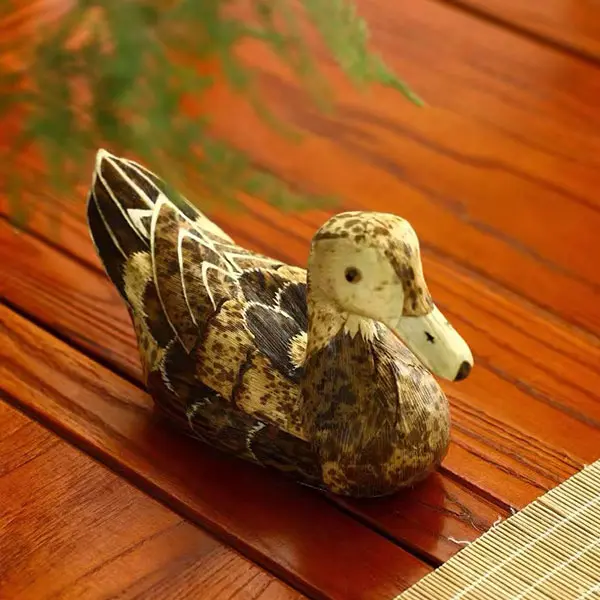
What are Tea Pets Used for?
A tea pet is an important part of Kung Fu tea and we often place it on the tea tray. It is not only used for ornamental purposes, but also has many special benefits.
1. Accompanying Tea Drinkers
Tea pets are placed on the tea table to accompany tea drinkers during their sessions, adding companionship and charm to the tea experience.
2. Temperature Indicators
One of the primary functions of tea pets is to act as a temperature indicator. Before pouring hot water over the tea leaves in the teapot, tea drinkers pour a small amount of hot water over the tea pet. The water’s temperature helps gauge when the teapot is ready for brewing the tea. The tea pet may change color or release steam, indicating that the water is hot enough for steeping the tea.
3. Best Wishes
Tea pets often carry various symbolic meanings, representing good luck, fortune, prosperity, or cultural and mythical figures. They frequently take the form of animals like dragons, lions, frogs, or even mythical creatures.
4. Caring and Bonding Rituals
Taking care of a tea pet can become a ritual in itself. Pouring leftover tea or water over the tea pet is seen as a sign of respect and appreciation for the tea, and over time, a unique appearance or gloss may develop from the repeated application of tea.
5. Conversation Starters
Tea pets can serve as conversation starters and icebreakers during tea gatherings or ceremonies. Guests may discuss the symbolism or history behind the tea pet, adding an extra layer of cultural significance to the tea-drinking experience.
6. Collectibles and Decorations
Many tea enthusiasts collect tea pets as unique and beautiful art pieces, displaying them on the tea table or in a tea room as decorations.

Types of Tea Pets
Tea pets are predominantly made from purple clay and chengni clay, while a smaller portion is crafted from materials such as resin, ceramic, or stone. Depending on the material used, clever artisans have developed tea pets with different functions and appearances. There are three main categories of tea pets.
1. Color-changing Tea Pets
Color-changing tea pets are usually made from resin and feature thermochromic properties. When hot tea water is poured over them, they immediately change colors, reverting to their original hue once they cool down. Some are coated with a chemical material that changes color when exposed to heat.
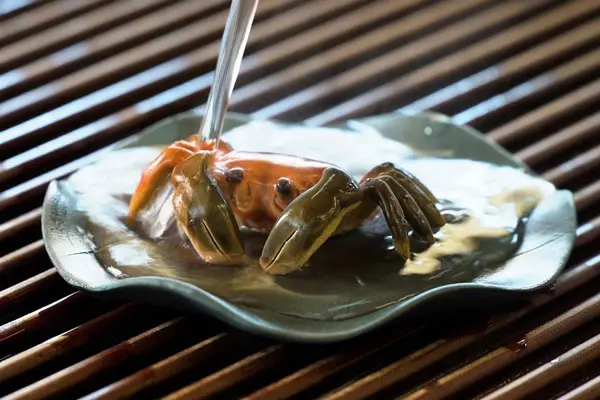
How does the color changing tea pet work?
Color-changing tea pets are primarily made of resin. The surface of these tea pets is coated with a layer of temperature-sensitive material. When doused with hot tea, these pets instantly display vibrant colors, but return to their original shade once cooled. Originally, the color-changing feature was limited to the golden toad variety. Over time, the range of designs expanded, and the technology improved. Now, the color transitions appear more natural and realistic.
The materials used for these tea pets are heat-sensitive and can withstand temperatures up to 320 degrees Celsius. They are non-toxic, free of lead and chromium, and do not change colors due to chemicals. Furthermore, they meet European standards, ensuring they are safe to use.
2. Water-spraying Tea Pets
The water-spraying mechanism is achieved through the hollow structure of the tea pet. By keeping the tea pet immersed in water regularly, it gradually fills its belly with water. When hot tea is poured over it, the heated air inside the tea pet expands and pushes the water out of its mouth, creating a spraying effect.
Another method involves pouring boiling water over the tea pet to expel the air from its belly and immediately placing it in cold water. The cold water then contracts, drawing water into the tea pet. Pouring hot water over it will result in a water-spraying effect.
Examples:
- “pee-pee boy” tea pet
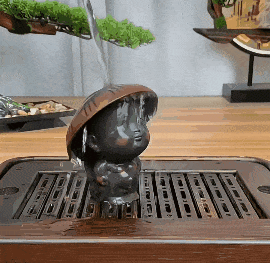
- “Bubble-blowing Goldfish” tea pet
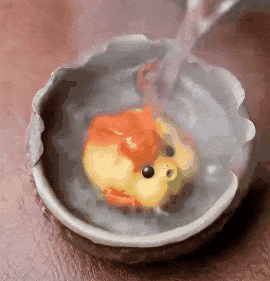
How does the pee pee boy work?
The pee-pee boy uses the principle of heat expansion and cold contraction. You need to soak the pee-pee boy in cold water first and wait until it naturally sinks to the bottom before fishing it out. With boiling water poured over the pee-pee boy’s head, the pee-pee boy’s abdominal cavity is expanded by the heat, and it starts to pee.
Here is a detailed description: https://www.youtube.com/watch?v=wmm2G6zfzuI
3. Traditional Tea Pets and Their Symbolic Meaning
The traditional tea pet shapes are derived from characters and animals in life and mythology, such as the dragon, the brave animal, the pig, the monk and so on. They often carry auspicious meanings:
Pixiu: Symbolizes wealth and can attract wealth from all directions, making it popular on business people’s tea tables.
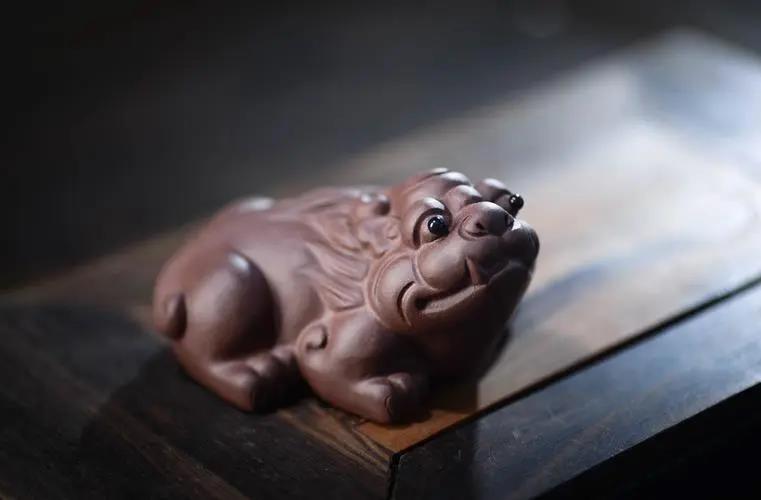
Golden Toad: A mythical creature associated with wealth attraction. It has three legs, carries the Big Dipper on its back, and holds two coins in its mouth, which can be rotated with your hand, symbolizing “earning money.” It is also favored by merchants.
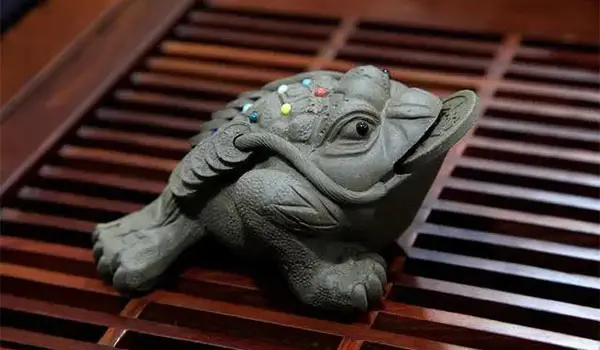
Pig: Pigs have long been symbols of abundance and auspiciousness. Keeping one on your tea tray adds a lovable touch and attracts positive energy.
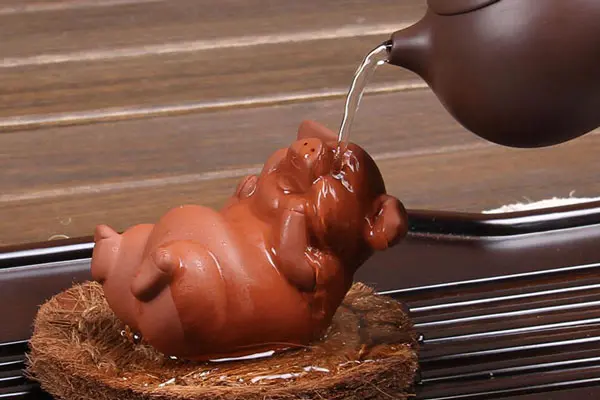
Buddha’s Foot: Also known as “Ruyi Foot,” it resembles chubby baby feet and symbolizes contentment, peace, and happiness.
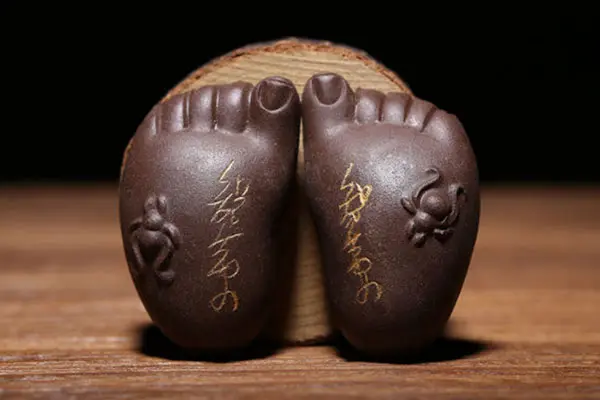
Turtle: Turtles are associated with longevity and are believed to live for ten thousand years. Thus, using a turtle as a tea pet expresses a wish for long life.
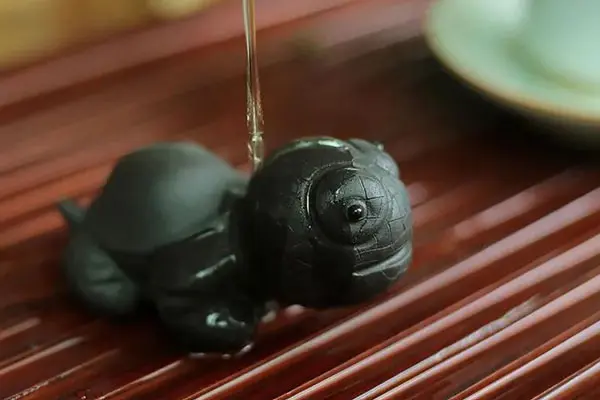
Chinese Cabbage: In Chinese phonetics, cabbage sounds like “hundred wealth.” Having a cabbage tea pet represents attracting and accumulating wealth.
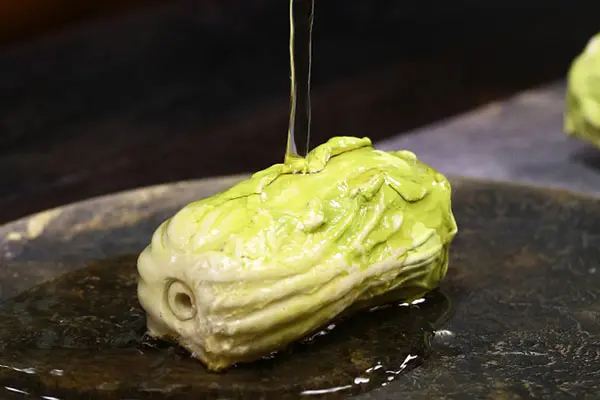
Buddha and Monk: These Zen-inspired tea pets exude a sense of tranquility and reflect the owner’s mentality of not competing with others.
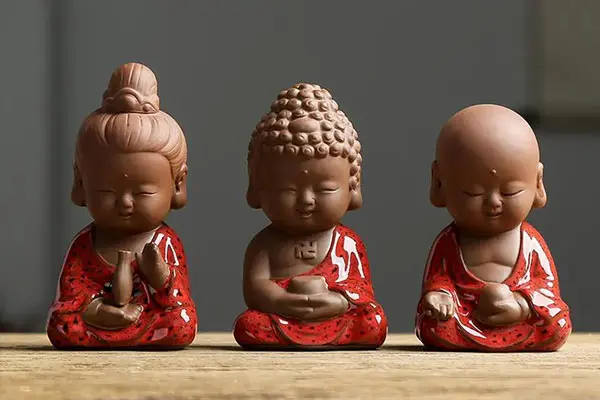
Dragon: In traditional Chinese culture, the dragon is a symbol of power, nobility and honor, a sign of luck and success, and a symbol of the Chinese nation.
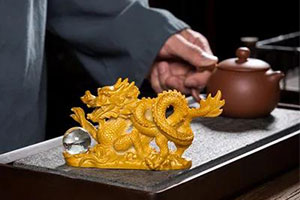
Crocodile: The crocodile symbolizes invincibility in the business world and can also be used in other areas. It is also a symbol of wealth and status. Because the crocodile is the dominant player in the water, it can also be rampant on land.
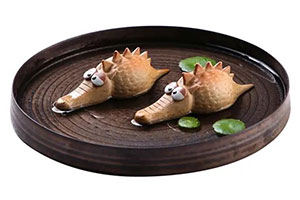
Frog: In some cultures, the frog is seen as a symbol of fertility and abundance. This may be related to the frog’s fertility, as it usually gives birth to a large number of tadpoles, symbolizing the continuation of life and prosperity. In Western cultures, the frog is seen as a symbol of luck and protection.

How to Care for Tea Pets?
Just like Yixing teapots, purple clay tea pets need to be “immersed” in tea. Over time, through repeated pouring of tea, tea pets develop a deeper matte color and the luster of jade, which known as “baojiang包浆” . It signifies the tea pet’s maturation process. Here are some care tips for your tea pet:
1.A new tea pet can be seasoned through artificial or natural fermentation. For artificial fermentation, place the new tea pet in a container filled with tea and let it sit for 2-4 days before removing it. For natural fermentation, simply pour tea over the tea pet daily, and the baojiang will develop gradually. For beloved tea pets, it is recommended to use the artificial fermentation method, as you can witness its transformation day by day, isn’t that more fascinating?
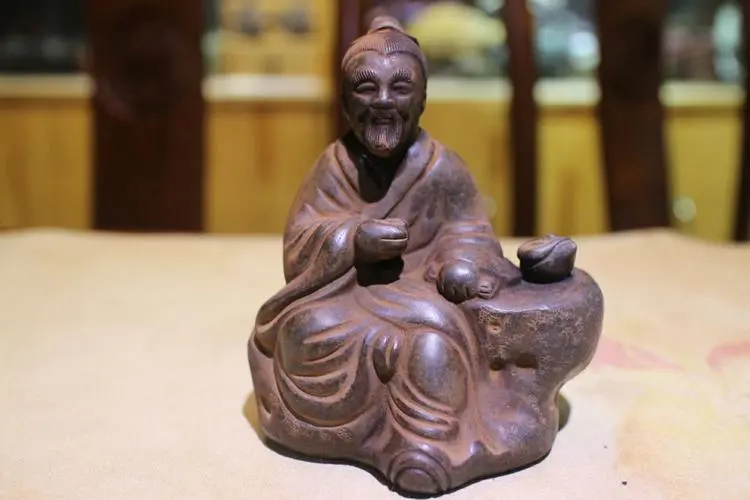
2. During the seasoning process, only use tea to nurture the tea pet; avoid using water. Tea creates a warm and smooth texture on the tea pet’s surface.
3. Many people use leftover tea to nurture their tea pets, but it’s best to use freshly brewed hot tea for “showering” your tea pet.
4. Regular maintenance involves daily cleaning with a brush and periodic rubbing with a tea towel to ensure clear openings, making it easier to observe the water-spraying effect.

5. Choose a tea pet of moderate size, not too large, as it should also serve as a water reservoir.
6. If your tea pet gets dirty, don’t worry. If it is dark-colored, you can immerse it in boiled Pu-erh tea or black tea and then wipe it dry. Repeating this process several times can alleviate or resolve the issue. If the tea pet is light-colored, try using green tea or floral tea.
7. Nurturing a tea pet requires dedication, just like caring for a pet. Gently wipe it with a non-shedding soft cloth and knead it in your hand. The oil from your hands will give the tea pet a jade-like texture.
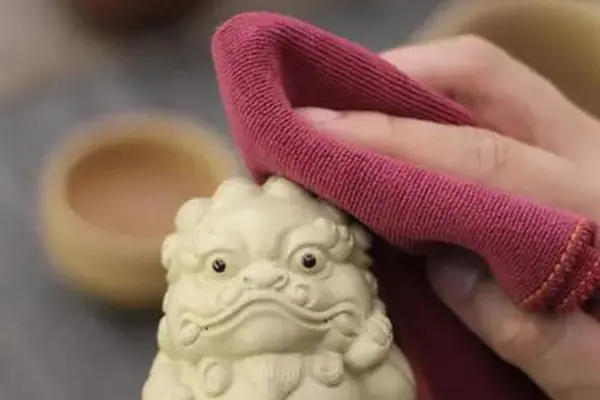
8. Similar to Yixing teapots, it’s best to use one type of tea to nurture your tea pet, preventing color impurity caused by exposure to different tea types.
Conclusion
In conclusion, tea pets are not merely decorative objects, but rather endearing companions that bring joy and symbolism to the tea-drinking experience. Through their various functions and shapes, they enrich the art of Gongfu tea and serve as treasured collectibles. Nurturing and caring for a tea pet can be a rewarding and immersive practice, forming a unique bond with your tea companion. So, why not embark on this delightful journey with a tea pet by your side as you explore the world of tea?
